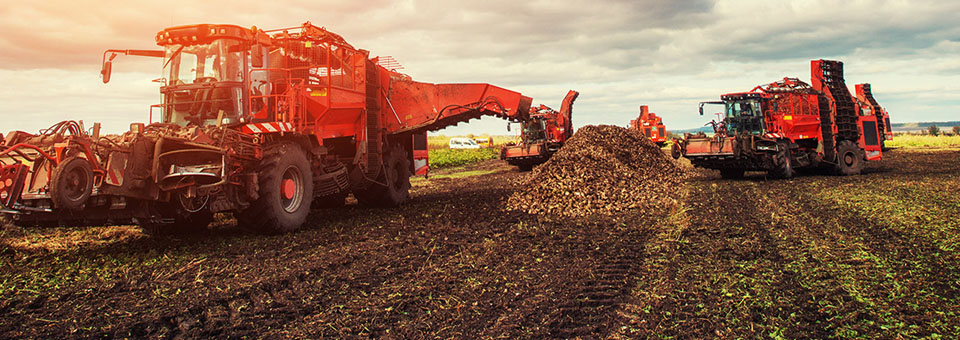It takes 500 years for nature to build less than one inch of living soil…
But only seconds for Big Agra to destroy it.
Over the past 40 years, about 2 billion hectares of soil — that’s an area bigger than America and Mexico combined — have been stripped of lifesaving nutrients.
And thanks to Big Agra’s profit-driven modern farming techniques, 30% of the world’s cropland is now unproductive.1
It’s a stark contrast from what the very first farmers found…
While following the animals they hunted, our primal ancestors found themselves in a place where wild plants grew in abundance.
With such a rich bounty, they decided to set up camp. Eventually, they noticed that if they threw the seeds of plants on the ground, over time they grew.
And so, around 12,000 years ago, the Agricultural Revolution began.
The first plants our ancestors harvested were packed with nutrients.
Those are the minerals, vitamins and other plant compounds that have the power to combat today’s diseases like cancer, heart disease, Alzheimer’s, osteoporosis and
diabetes.But Big Agra’s focus is on reaping the maximum number of crops at the cheapest cost. Nutrition has nothing to do with it.
And today, one of the most important nutrients missing from our food is magnesium.
A few years ago, the Journal of the American College of Nutrition published a study comparing the nutrient content of crops in 1999 with 1950 levels.
The researchers were shocked to find many vegetables had lost up to 90% of their magnesium content. So it’s not surprising that almost 90% of Americans are deficient in magnesium today.
Magnesium is responsible for more than 300 biochemical reactions in the body. And when you don’t have enough, your body stops functioning efficiently. Your nervous system slows down, inflammation runs rampant and your heart beats erratically.
In fact, people with a magnesium deficiency have a higher risk of dying from any cause.
Including diabetes.
You see magnesium plays a key role in preventing — and reversing — insulin resistance and diabetes.2
High blood glucose levels increase magnesium loss in the urine. This in turn lowers blood levels of magnesium. So getting enough magnesium is especially important in diabetes.
Multiple studies show that magnesium keeps insulin sensitivity and glucose regulation running like a well-oiled clock. Here are just a couple of recent studies:
- Researchers at the Kansai Medical University in Japan revealed that reduced levels of cellular magnesium can lead directly to insulin resistance.3
- The large Framingham study found higher magnesium intake improved insulin sensitivity and significantly reduced type 2 diabetes risk.4
Boost Your Magnesium Levels Naturally
The recommended daily amount of magnesium is 350 mg. That’s nowhere near the 1,000 mg you need. The good news is that it’s easy to boost your magnesium levels and get them back where nature intended.
Always start with diet. You can get more magnesium by eating nuts, seeds, dairy products and dark green, leafy vegetables. But given the depleted state of our soil, you’ll need to find additional sources.
Here’s what I tell my patients…
- Take powdered kelp: With 780 mg of magnesium, no other food source comes close to this kind of seaweed. I like to make a soup stock from kelp, and I also sprinkle it over my food.
- Sprinkle on the sea salt: This unrefined salt has all the minerals that nature meant salt to have — including magnesium.
- Bathe in it: Magnesium sulfate, or Epsom salts, was one of the first forms of magnesium used for its healing qualities. While it’s not safe to eat, it’s great in a bath. Just soak and let the magnesium work its magic on your body.
- Supplement: You can get magnesium tablets, softgels, capsules or a powdered magnesium citrate formula online and in health food stores. I recommend between 600 mg and 1,000 mg a day to combat insulin resistance.
Take your magnesium supplement with vitamin B6, which increases the amount of magnesium that accumulates in your cells. Also add vitamins D3 and K2, since these all work synergistically with one another.
To Your Good Health,
![]()
Al Sears, MD, CNS
1. Global Soil Degradation Report. GRID-Arendal.
2. Barbagallo M., Dominguez L. “Magnesium and Type 2 Diabetes: An Update.” Int J Diabetes Clin Res. 2015.
3. Takaya J., Higashino H., et al. “Intracellular magnesium and insulin resistance.” Magnes Res. 2004 Jun.
4. Rumawas ME., McKeown NM., et al. “Magnesium intake is related to improved insulin homeostasis in the Framingham offspring cohort.” J Am Coll Nutr. 2006 Dec.

